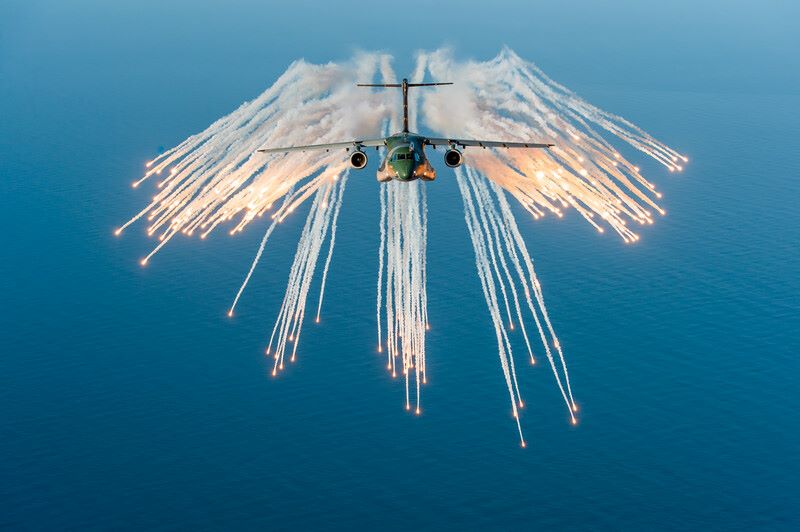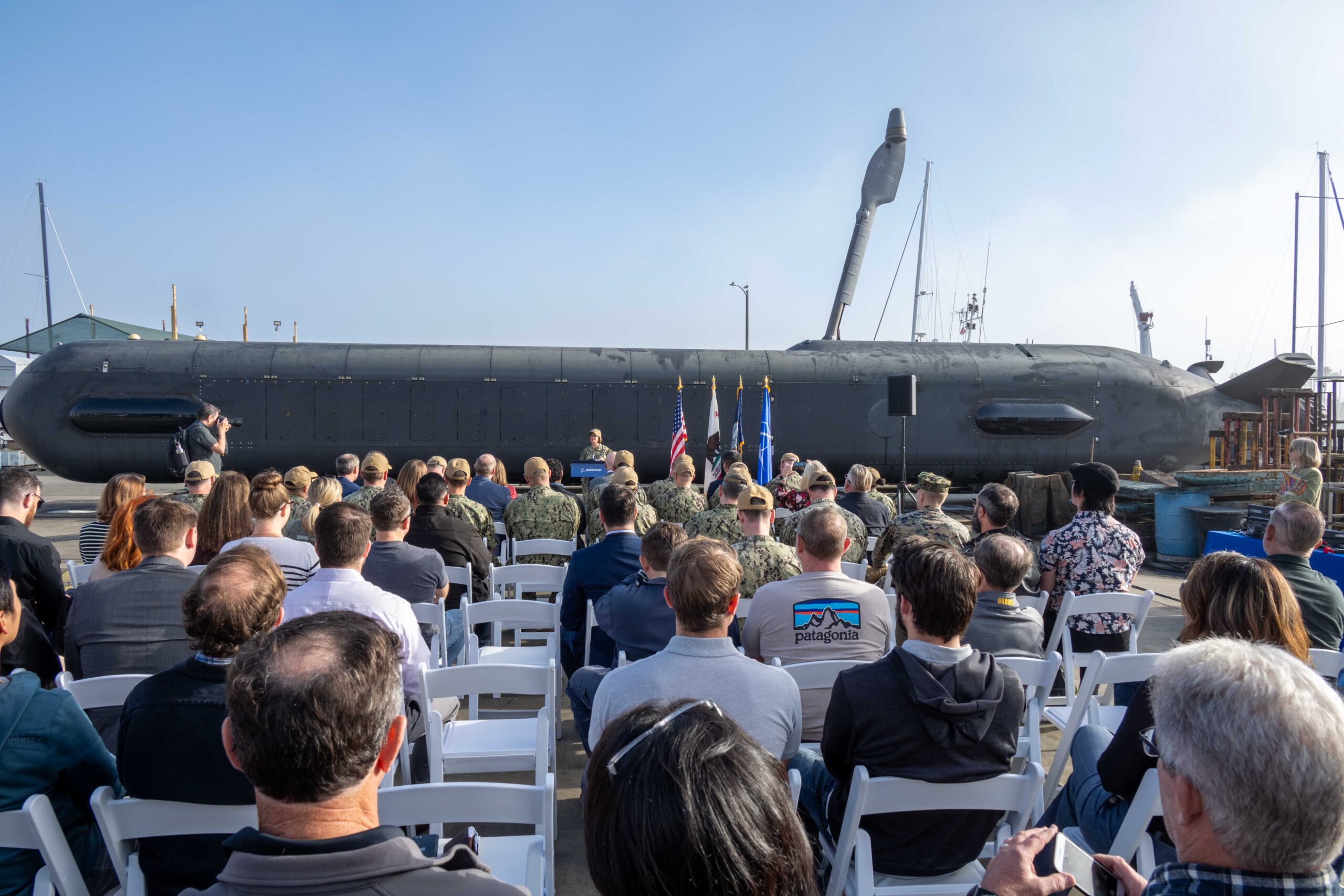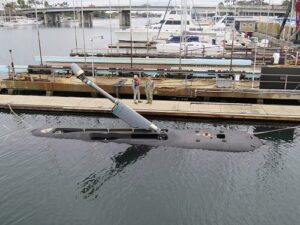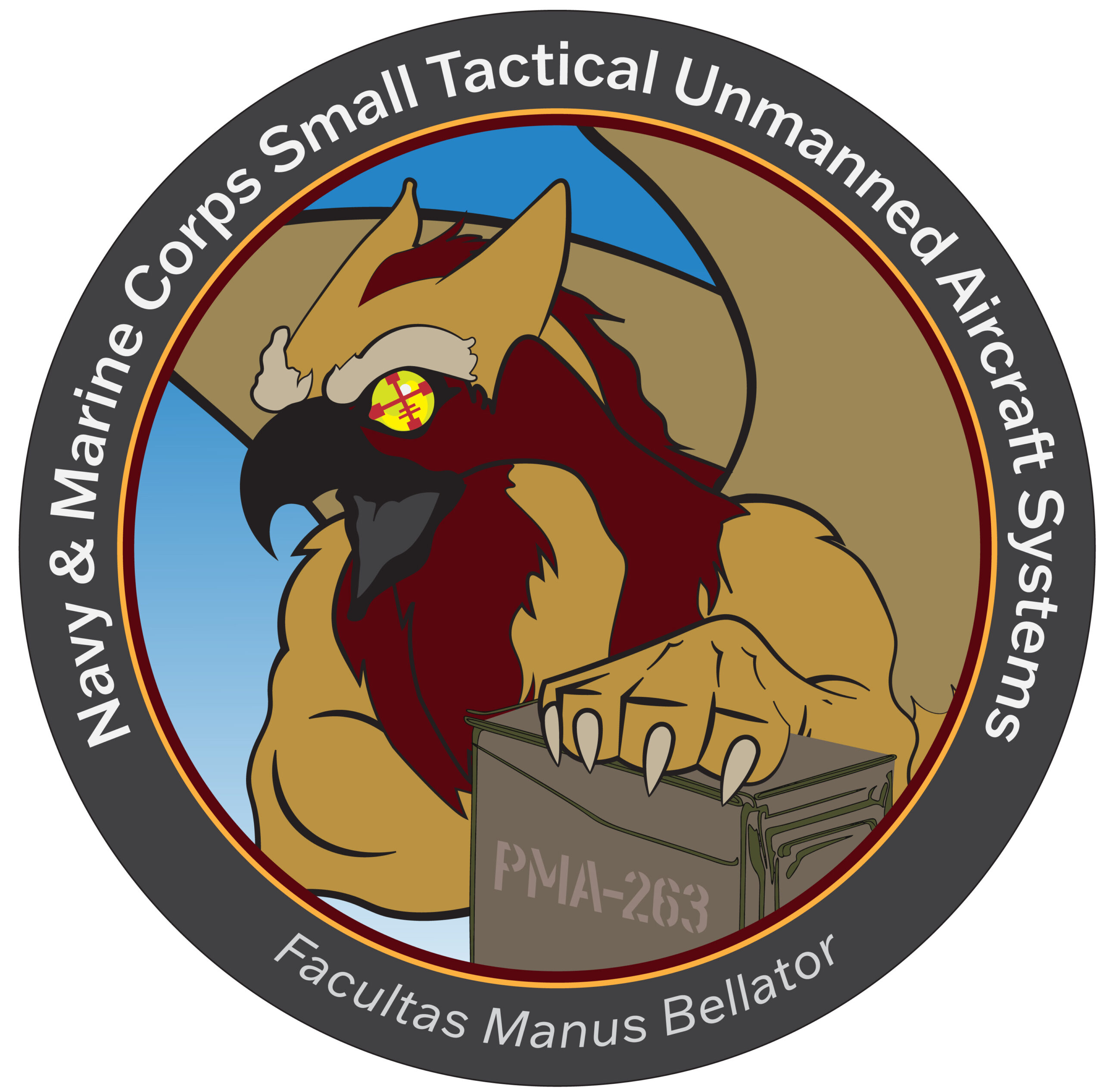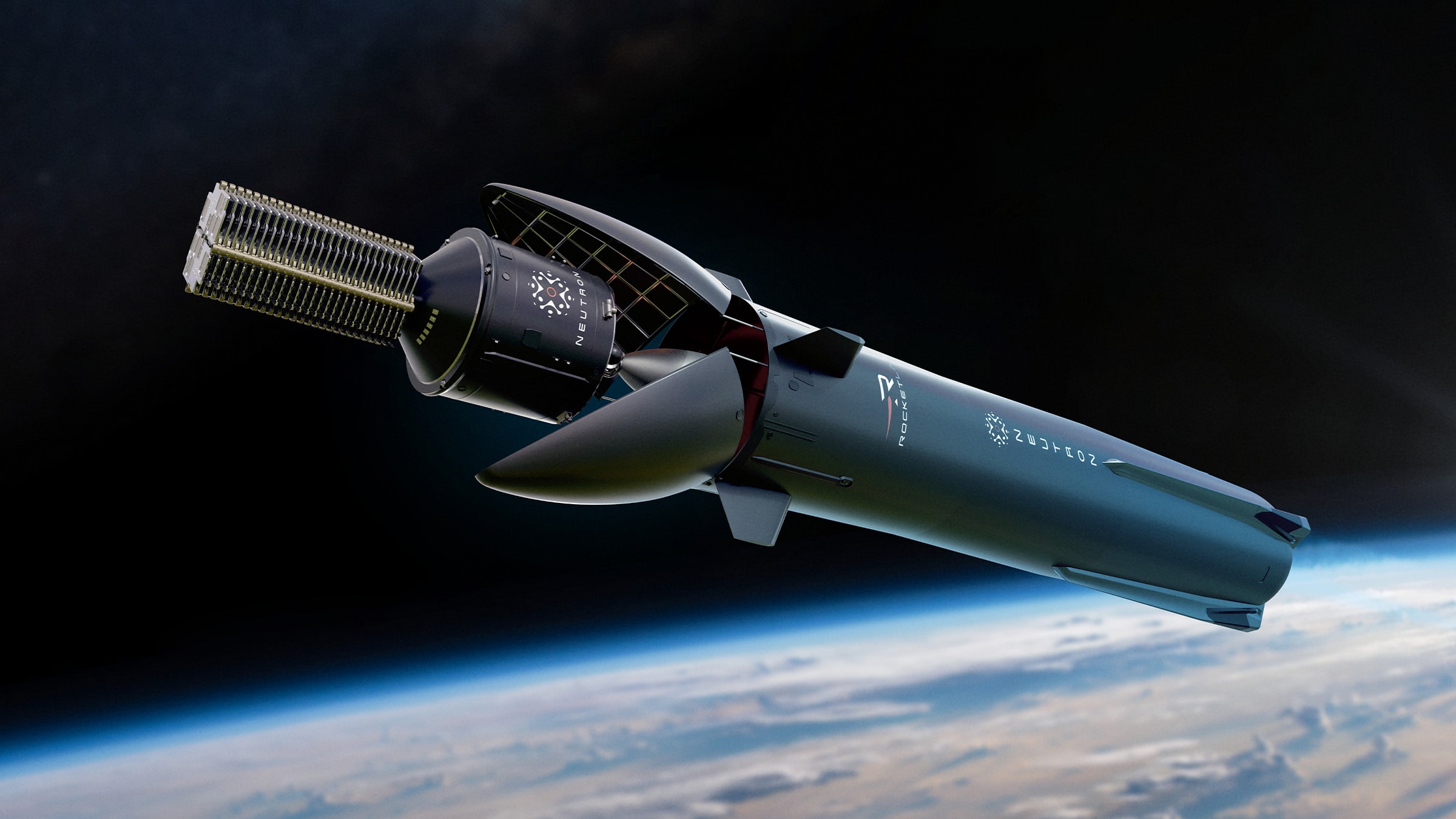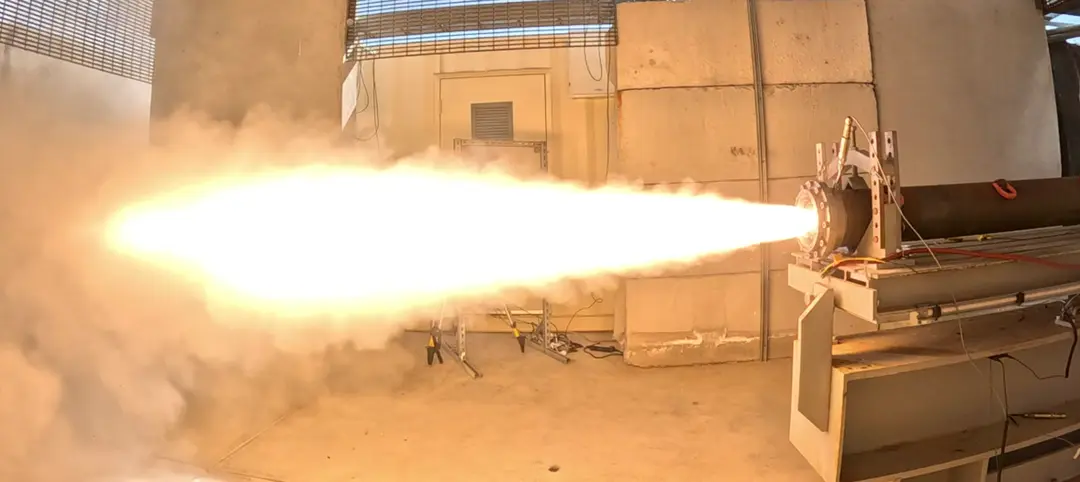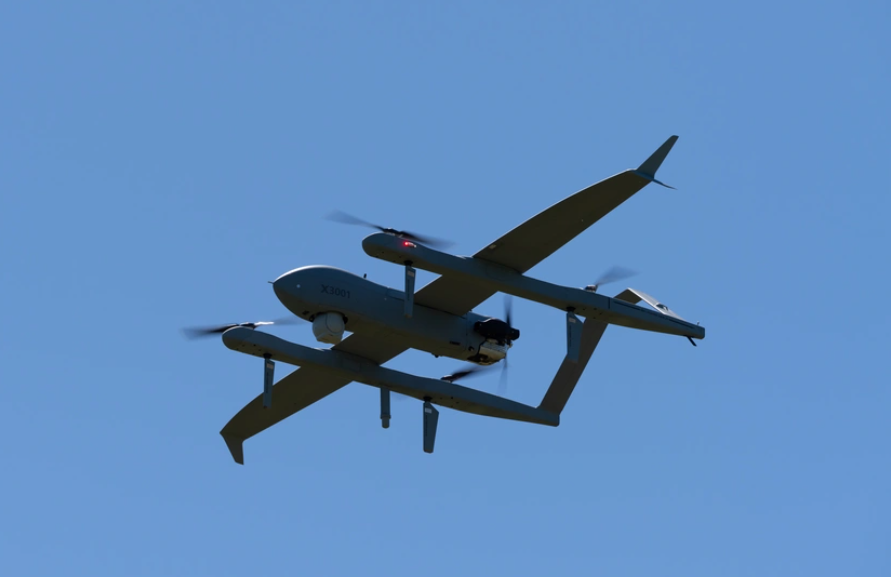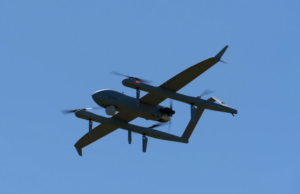JOINT BASE ANDREWS, Md.—Embraer brought its KC-390 jet tanker/transport to show to companies and Pentagon officials at the recent Aerial Refueling Systems Advisory Group (ARSAG) International meeting in Las Vegas and Special Operations Week in Tampa, Fla.
Visits to the plane included one by Air Force Gen. John Lamontagne, the head of Air Mobility Command.
On Thursday, the Brazilian Air Force KC-390 was again on display here, as Embraer showed the plane to U.S. military and congressional officials.
The company is seeking to make significant inroads in the U.S. market with the KC-390–an opportune time, as Pentagon officials say deterrence of China is their top priority and as the U.S. Air Force implements Agile Combat Employment (ACE) for far flung locations in the Indo-Pacific and elsewhere.
Embraer says the KC-390 can land on short, austere runways, air drop from 36,000 feet, and has an open architecture self-protection suite, including Elbit Systems
‘ directed infrared countermeasures, digital radar warning receiver, infrared missile warning system, laser warning system, electronic warfare pods, and chaff and flares.
Embraer also believes the Millenium could find a special operations niche.
“The KC-390 is raising a lot of eyebrows for special ops-type of missions with all its connectivity and capabilities, ” said Frederico Lemos, the chief commercial officer of Embraer Defense & Security.
Emerging needs for the U.S. Air Force look to be more air refueling booms and autonomous drones, including possibly thousands under the service’s Collaborative Combat Aircraft program.
“We see the KC-390 as a strong contender for what we also see–the need for tanking–more tanking, more booms, more baskets in the air,” Lemos said. “The 390 is here in production, ready to contribute to that effort for the U.S. and partner nations and increasing its capacity for tanking, for airlift, special missions, ISR, and palletized effects.”
The Air Force’s Analysis of Alternatives for the Next Generation Air Refueling System–a possibly stealthy tanker–has been examining required runway size, fuel carriage for long-range missions, and the need for tanker stealth.
The KC-390’s Eaton Corp. [ETN] wing refueling pod supports probe-and-drogue “basket” tanking, used by U.S. Navy fighters.
Among the KC-390 buys so far are 19 for Brazil, 5 for Portugal, 5 for the Netherlands, four for Austria, three for South Korea, two for Hungary, and two for the Czech Republic.
Embraer had been developing a boom with L3Harris Technologies [LHX] for the KC-390, but the uncertain future for the U.S. Air Force tanking fleet contributed to L3Harris pulling out last October, and Embraer has been looking for new partners on the boom project.
Embraer and L3Harris had started their boom development in 2022 as part of a range of refueling options, including a remote system, for the KC-390 to allow the plane to offload 75,000 pounds of fuel, about 30 percent the advertised capacity of a Boeing [BA] KC-46A Pegasus (Defense Daily, Sept. 19, 2022).
While the Air Force’s fleet thus far of 89 KC-46As fit under the “strategic” tanker category of the mainstay KC-135s, Embraer says the KC-390 could be an important tanking asset due to the plane’s ability to be refueled and its defensive system and short, austere runway features.
Embraer said that it is looking for a site in the U.S. to build the KC-390, if the latter meets U.S. military requirements. U.S. KC-390 suppliers include Collins Aerospace [RTX] for plane avionics and Pratt & Whitney [RTX] for the combustor/two-stage air-cooled high pressure turbine for the aircraft’s IAE V2500 engine.
“What is very important for us is to understand the critical [boom] design requirements for the Air Force–whether it’s going to be more manual or more remote,” Lemos said. “We need to listen to the Air Force, whether it’s important to have the capability very fast, working very well in a proven platform, or to have something different.”
Congress has set the minimum tanker number at 466. Air Force Chief of Staff Gen. Dave Allvin said that the service foresees fixing all Category 1 deficiencies with the KC-46A’s Remote Vision System (RVS) 2.0 in the next 18 months–a timeline which would mean about a seven-year timeline since Boeing and the Air Force agreed on a re-design of the original RVS (Defense Daily, May 7).
